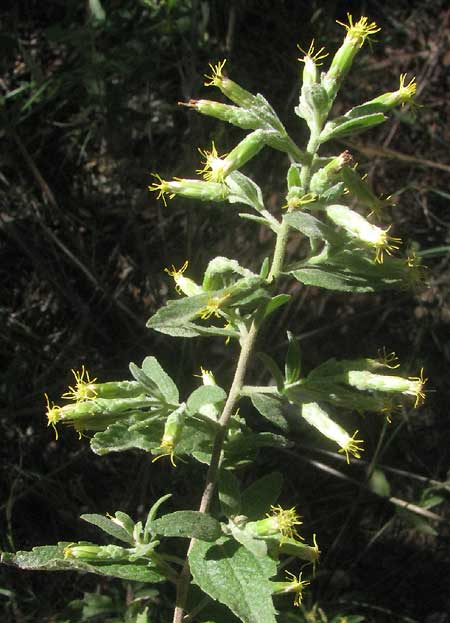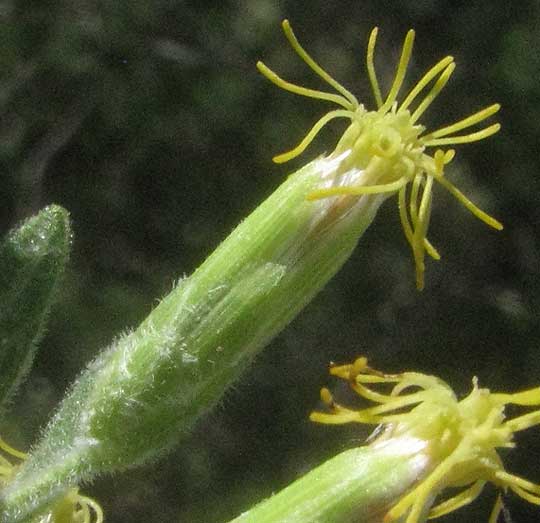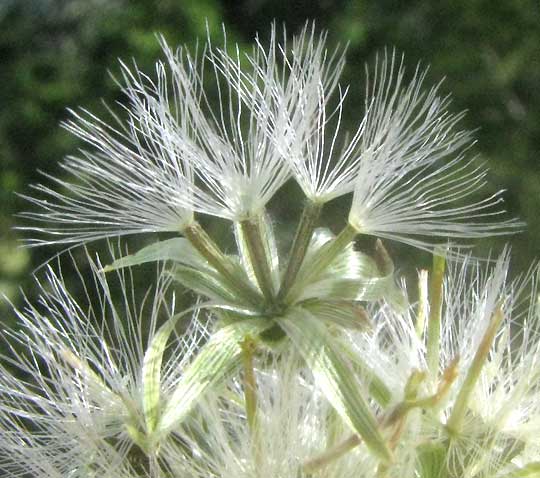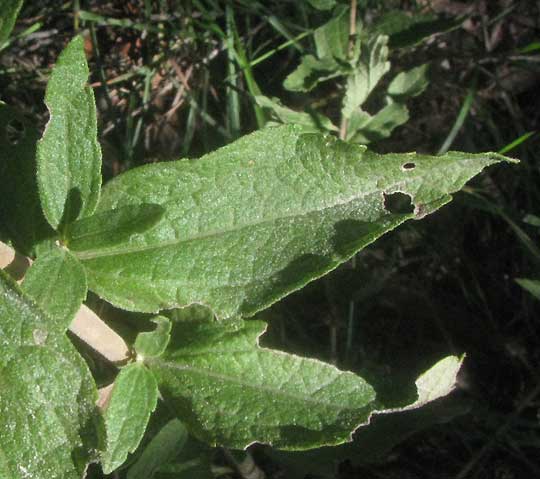Excerpts from Jim Conrad's
Naturalist Newsletter
from the October 13, 2013 Newsletter issued from the Frio Canyon Nature Education Center in the valley of the Dry Frio River in northern Uvalde County, southwestern Texas, on the southern border of the Edwards Plateau; elevation ~1750m (~5750 ft); N29.62°, W99.86°; USA
BRICKELLBUSH
All summer, right at Juniper House's door, a certain low bush with dark, green leaves has been developing. It was such a robust, well proportioned and somehow comely plant that several people asked what it was, but I didn't know. I had to wait for the flowers. Flower buds appeared about two weeks ago, and now the plant is in full bloom. Below, you can see a waist-high clump with its much-branched, soft-woody base:

Branch tips are heavy with narrow flower clusters of the kind found in the Composite or Sunflower family, but consisting only of cylindrical disc flowers without petal-like ray flowers, as shown below:

A flower head up close shows that a head's few disc flowers are held within a narrow involucre consisting of scale-like phyllaries that at the base of the involucre are short and fuzzy but at the top are long and hairless, as shown

In that picture, the slender, yellow items bending from the disc flowers' five-toothed crowns are style branches, reaching out to capture pollen.
A few weeks ago someone stepped on a plant, causing it to wither and unseasonably early produce parachuted, cypsela-type fruits, as shown below:

In that picture, notice how the long inner phyllaries gracefully peel back, presenting the cypselae as in a floral arrangement. The cypselae's parachutes help in wind dissemination.
The Flora of North America says that the species' leaves are "mostly opposite, sometimes alternate or subopposite," but ours tend to be mostly alternate. Some are shown close-up below:

Books often refer to this plant as the Brickellbush. It's BRICKELLIA CYLINDRACEA, endemic only to a few counties in central Texas. It's a wonderful find, and I'm honored to have such an uncommon species growing so lustily right beside my door.
About a hundred species of brickellbushes -- or members of the genus Brickellia -- are recognized, living in Central America, Mexico, and the US. In the US 32 species are known, mostly in the desert Southwest. In our area, two other brickellbush species are to be expected, and one, Brickellia dentata, is very similar. Also, I believe there must be a confusion about the common names of these species. Several web pages refer to our present Brickellia cylindracea as the Gravelbar Brickellbush, but the Flora of North America, which doesn't ascribe a common name, says that our plant lives on limestone hills, where we have found it. However, the similar species, Brickellia dentata, is said to populate gravel along rivers, though most websites call that species the Leafy Brickellia. Sometimes websites copy errors from one another. I'm guessing that that's the case here, so I'm just calling our present Brickellia cylindracea Bricklellbush. These common names often are a plague.
This handsome, perennial bush with dark green leaves certainly would be a fine addition to any xeriscaped garden in arid country.